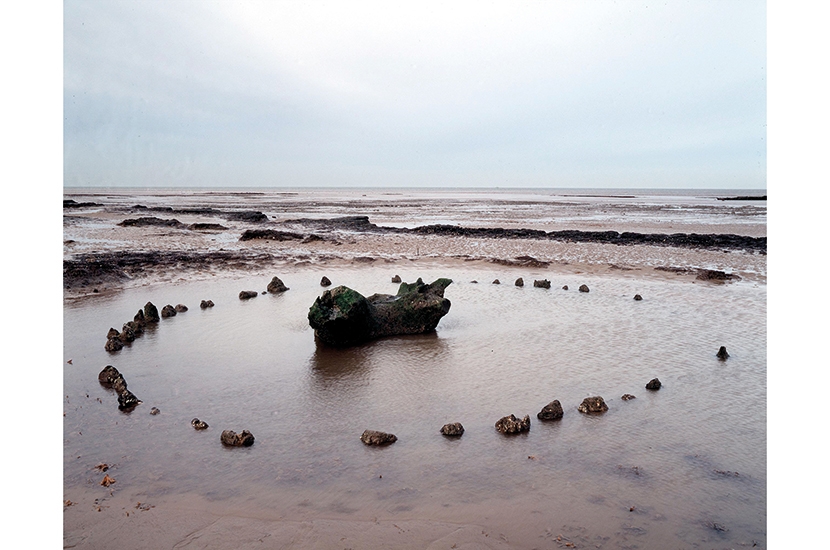During the first lockdown last year, taking my lockdown puppy for our Boris-sanctioned daily walks, I discovered a love of prehistoric hill forts. By the third lockdown I, a hardened medievalist, had even progressed to an unexpected admiration for megalithic stone structures. My former indifference was caused by the perceived lack of people within those landscapes. Sure, they are spectacular, but it took a year of walking and a hefty amount of Googling before I appreciated how much we know about the people who shaped and experienced them. The latest book by the archaeologist and Time Team presenter Francis Pryor would have got me there an awful lot quicker.
Scenes from Prehistoric Life aims to ‘dispel the myth that people in the past lived lives that were simpler and somehow less rich than ours’ — a common misconception of prehistory. ‘Nothing’, says Pryor, ‘could be further from the truth.’ In a series of 15 profiles of chronologically arranged landscapes, his book covers about a million years of prehistory, up to the arrival of the Romans in AD 43 and their subsequent impact on the next few centuries.
The Red Lady of Paviland turned out to be not a pre-Roman prostitute – or even a woman
The first scene is set during the Ice Age, and the earliest occupation of Britain. Discoveries include footprints — five people, including three children, weaving their way across the foreshore — preserved in estuarine muds at Happisburgh, Norfolk, dating to 850-950,000 years ago, so early that they were not even made by Homo sapiens but by some precursor. The placement of this group, a family perhaps, into the narrative is a sign of things to come. Throughout his scenes, Pryor takes a long view of the past, with an overarching theme of change: of environments and of societies. But this is done through individual sites and, importantly, what we can glean about the people who inhabited them.
Fast-forward to the Mesolithic (Middle Stone Age) and the familiar landscape around Stonehenge makes its first appearance; but in its less familiar, early guise alongside the nearby site of Blick Mead. Here, combined with the later scene covering Stonehenge’s better known Bronze Age iteration, Pryor demonstrates how these sites testify to a changing dynamic between people, landscapes and monuments, as he ponders the meanings they had to the people of the past.
Another scene describes Seahenge, the timber circle surrounding an upside-down oak tree that appeared in 1998 at a beach in Holme-next-the-Sea in Norfolk. It was built in the spring of 2049 BC and may have been a funerary shrine where bodies were laid out to be picked clean by scavenging birds, before the bones were respectfully interred in a barrow nearby.
Perhaps such monuments functioned like later cathedrals and churches. But while the ceremonies that took place there left little trace, the people who created the henge did. Tool marks were found in the surface of the wood which, archaeologists showed, were made by up to 59 different bronze axes — probably owned by different people. Each would have cost, Pryor suggests, ‘the equivalent of, say, a car’.
Other people who take centre stage are the discoverers, both recent and more distant. Dean Buckland was the theologian and geologist who found the Red Lady of Paviland in a remote cave on the Gower Peninsula in 1823. He believed this to be the body of a prostitute, buried shortly before the Roman conquest, but he was spectacularly wrong: it turned out to be the earliest example of a modern human found in Britain to date — and not even a woman.
The main protagonist of Scenes, however, is Pryor himself. This is very much a personal account, which draws on his experience of archaeological excavations spanning more than five decades. As such, it is difficult to categorise, being a narrative (pre)history, a memoir and a series of lessons in archaeology, weaving together new and old research with his own interpretations. You get a lot of Francis Pryor in this book, but that is only a good thing. His descriptions of visiting and excavating the sites mentioned add welcome dimensions — from the smell of tannins released by the oak bark at Seahenge to the taste of rock samphire served to him on a Time Team shoot to represent prehistoric Cornish cuisine.
Decades’ worth of communicating archaeology on TV and a recent foray into crime fiction writing help make this a highly compelling read. What the book does particularly well is to humanise prehistory. It doesn’t take much stretch of the imagination to picture someone walking through these landscapes millennia ago —perhaps with the prehistoric equivalent of a lockdown puppy by their side.






Comments